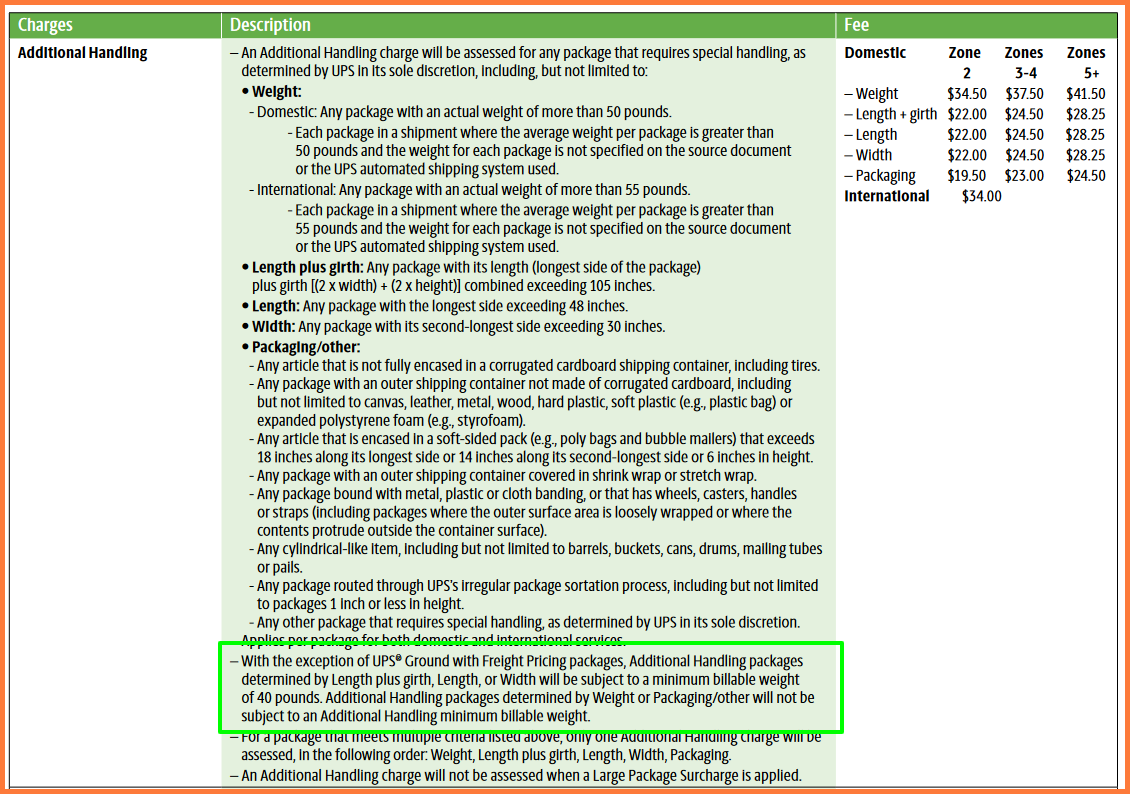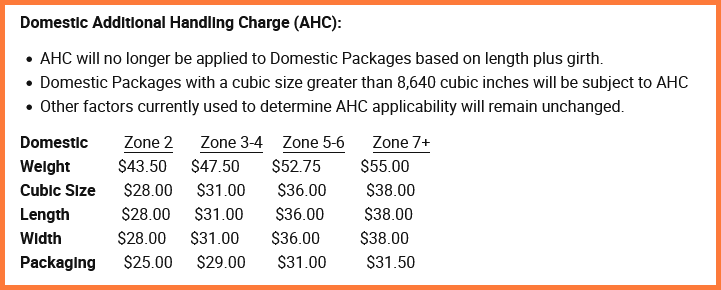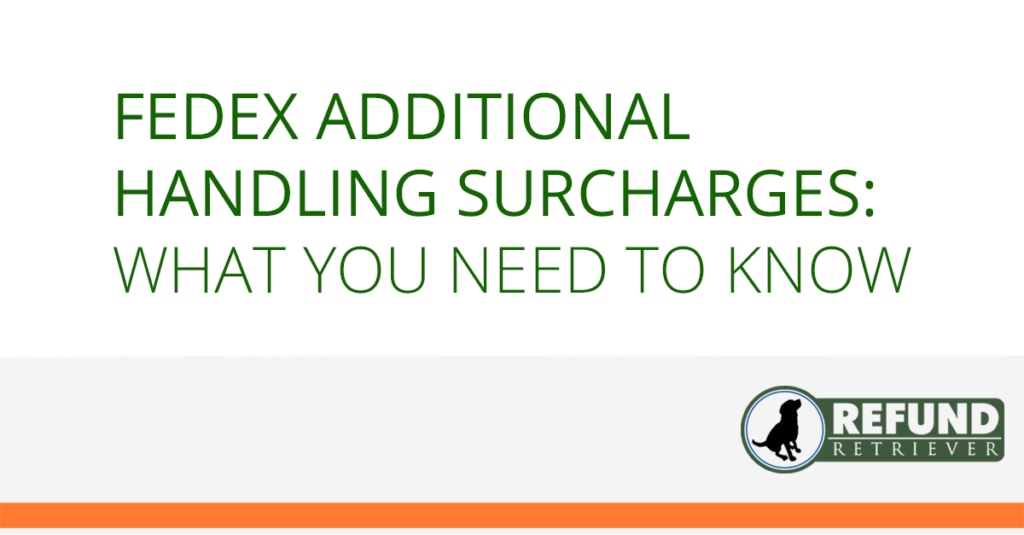Many shippers notice a UPS Additional Handling charge on their UPS invoice and wonder what it is and why it is so expensive. Additional handling charges are an added fee because the package did not conform to UPS’s characteristics. UPS service centers must treat the box differently from the rest. So, how much are these fees, and how can we reduce them?
Estimated reading time: 5 minutes
How much is the UPS additional handling fee?
| 2025 | Zone 2 | Zone 3 – 4 | Zone 5-6 | Zone 7 & UP |
| Weight | $43.50 | $47.50 | $52.75 | $55.00 |
| Dimensions (Length, Width, Cubic Size) | $28.00 | $31.00 | $36.00 | $38.00 |
| Packaging | $25.00 | $29.00 | $31.00 | $31.50 |
2025 UPS changes – AHC Length
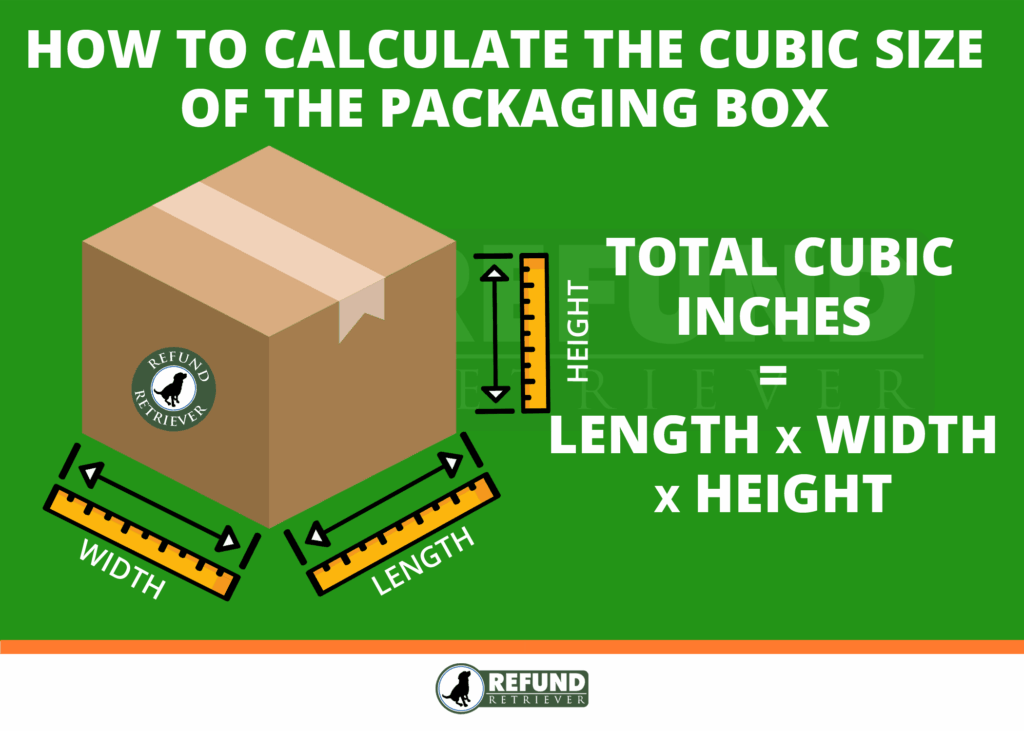
Effective on or after August 17, 2025, the Additional Handling Charge length plus girth definition for AHC will be replaced by a cubic volume definition to determine its applicability. Other factors currently used to determine AHC applicability remain unchanged.
2024 UPS changes – AHC Dimensions
Effective October 21, 2024, except for UPS Ground with Freight Pricing packages, Additional Handling Packages determined by length, width, or length plus girth are subject to a minimum billable weight of 40 pounds. Additional Handling determined by weight, packaging/other factors will not be subject to Additional Handling minimum billable weight.
2020 UPS changes – AHC Weight
Before this year, packages weighing 70 pounds or greater were charged an additional handling fee. In 2020, any domestic package with an actual weight greater than 50 pounds will have a $24.00 charge added to the cost.
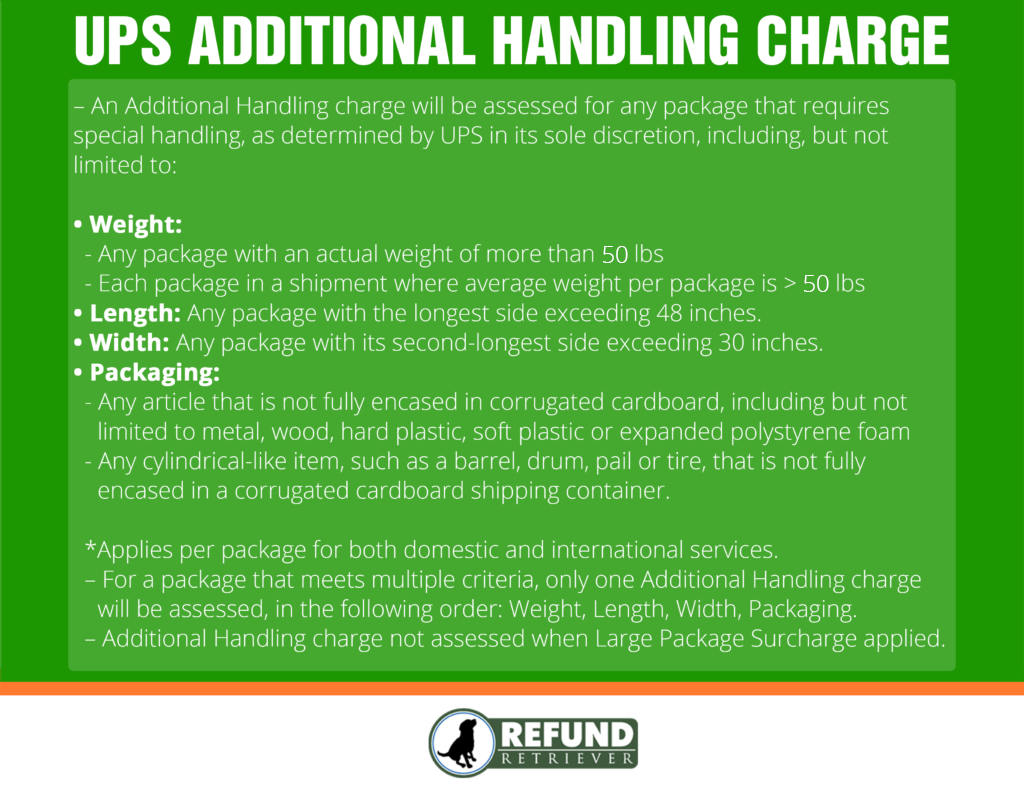
Historical UPS Additional Handling Fee Surcharges
| 2024 | Zone 2 | Zone 3 – 4 | Zone 5 & UP |
| Weight | $34.50 | $37.50 | $41.50 |
| Dimensions (Length, Width, Length + Girth) | $22.00 | $24.50 | $28.25 |
| Packaging | $19.50 | $23.00 | $24.50 |
| 2023 | Zone 2 | Zone 3 – 4 | Zone 5 & UP |
| Weight | $29.00 | $31.50 | $34.50 |
| Dimensions (Length, Width, Length + Girth) | $18.50 | $20.50 | $23.50 |
| Packaging | $16.50 | $19.00 | $20.50 |
| 2022 | Zone 2 | Zone 3 – 4 | Zone 5 & UP |
| Weight | $25.52 | $27.50 | $30.50 |
| Dimensions (Length, Width, Length + Girth) | $15.75 | $17.50 | $20.50 |
| Packaging | $14.00 | $16.00 | $17.50 |
| 2021 | Zone 2 | Zone 3 – 4 | Zone 5 & UP |
| Weight | $24 | $25.50 | $27 |
| Dimensions (Length, Width, Length + Girth) | $15 | $16 | $18 |
| Packaging | $14 | $15 | $16 |
How does UPS define an additional handling charge?
The following is from the 2021 Tariff/Terms and Conditions of Service Agreement that was updated on July 11, 2021:
40.9 UPS AHS Charge
- Any article that is not fully encased in a cardboard shipping container, including tires;
- A package with an outer shipping container not made of corrugated cardboard,
- including but not limited to canvas, leather, metal, wood, hard plastic, soft plastic, or Styrofoam;
- Any article in a soft-sided pack (polybag or bubble mailer) that exceeds 18 inches along the longest side, 14 inches along the second-longest side, or 6 inches in height;
- Packages covered in shrink wrap or stretch wrap;
- Any package bound with metal, plastic, or cloth banding or that has wheels, casters, handles, or straps;
- Cylindrical-like items;
- Packages routed through UPS’s irregular package sortation process;
- Any Package with its longest side exceeding 48 inches or its second-longest side exceeding 30 inches;
- Any domestic package with an actual weight greater than 50 pounds;
- International package with an actual weight of 71 lbs or more;
How can a company avoid UPS’s additional handling charges?
UPS’s additional handling and other fees account for a considerable portion of a small parcel shipper’s overall shipping spend. Therefore, effective shipping spend management is vital for any business to achieve a competitive edge in the densely populated e-commerce market. Our analytics and reporting will provide shipping and transportation insight for all your logistics and technology levels.
Price Reduction
They cannot avoid shipping packages within the UPS definition. Many companies have this cost reduced during a contract agreement negotiation with UPS. The carrier might agree to a 25-75% fee reduction.
A shipper can also request a discounted rate for one of the four situations. Rather than receive a 50% discount on all the additional handling fees, opt for a reduction on the two most used fees and full price on the others.
Definition Variance
But what if, instead of a cost reduction, a company could negotiate a definition variance of UPS additional handling? This would prevent packages from falling within limits. Try altering the UPS agreement to increase the actual weight limit to 53 or 55 pounds if your company has a product just over the limit. Another option is to request a variance in the measurements. Namely, negotiate for a modification to “any package with its longest side exceeding 50 inches or its second-longest side exceeding 33 inches.”
Contact the experts at Refund Retriever to analyze your current accessorial fee spend. In summary, we can help lower future shipping costs with a complete contract negotiation.

